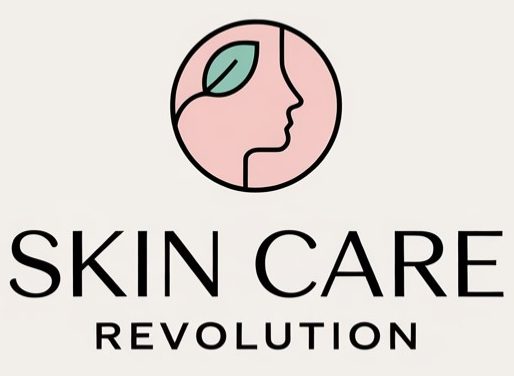What Nobody Tells You About Preventing Stretch Marks Early
When it comes to preventing stretch marks, most people focus solely on creams and lotions. But there’s so much more you need to take into account. It all starts from within, and your lifestyle choices play a critical role. Staying hydrated, eating the right foods, and adopting a proper skincare routine can make a significant difference. Curious about how small changes can lead to big results? Let’s explore the science behind skin changes and what you can do.
Key Takeaways
- Hydration is essential; drink plenty of water to maintain skin elasticity and reduce stretch mark risk.
- Incorporate a diet rich in vitamins A, C, E, and healthy fats to support skin health.
- Use high-quality moisturizers with ingredients like hyaluronic acid or shea butter for effective hydration.
- Regularly massage oils or creams onto prone areas to enhance circulation and absorption.
- Consistency is key; apply products twice daily for optimal results in stretch mark prevention.
Understanding Stretch Marks: The Science Behind Skin Changes
As you experience significant changes in your body, it’s essential to understand how stretch marks form.
Stretch marks develop when your skin stretches rapidly due to growth or hormonal changes, causing the collagen and elastin fibers to break down. These fibers are vital for maintaining skin’s elasticity and strength. When the skin can’t adapt quickly enough, the result is those telltale streaks.
Initially, stretch marks may appear red, purple, or dark brown, depending on your skin tone. Over time, they often fade to white or silver.
Recognizing the early signs can empower you to take proactive measures. By understanding this science, you’ll be better equipped to implement effective strategies to minimize their appearance and maintain healthier skin. Additionally, incorporating natural remedies can significantly enhance your skin’s resilience against stretch marks.
The Role of Hydration in Skin Elasticity
Hydration plays an essential role in maintaining skin elasticity, which is crucial for preventing stretch marks. When you stay adequately hydrated, your skin retains moisture, keeping it plump and supple.
This elasticity allows your skin to stretch without tearing, reducing the likelihood of developing stretch marks during periods of rapid growth or weight changes. Aim to drink plenty of water daily, as it directly impacts your skin’s health.
Additionally, consider incorporating hydrating serums or lotions to enhance moisture retention. Remember, your skin’s ability to adapt hinges on its hydration levels. Furthermore, using essential oil blends can also help support skin elasticity and minimize the appearance of stretch marks.
Nutritional Strategies for Preventing Stretch Marks
To effectively combat stretch marks, it’s essential to focus on your nutrition. Prioritize foods rich in vitamins A, C, and E, as these antioxidants support skin health and elasticity.
Incorporate healthy fats, such as avocados and nuts, to maintain skin hydration and suppleness. Protein is vital, too; it helps with collagen production, so include lean meats, fish, and legumes in your diet.
Don’t forget zinc and silica, found in whole grains and leafy greens, as they play a role in skin repair. Aim for a balanced diet that includes plenty of fruits and vegetables, ensuring you get a variety of nutrients. Additionally, consider applying all-natural stretch mark butter to enhance skin elasticity and moisture levels.
Skincare Routines: Products and Practices That Work
While many factors contribute to the prevention of stretch marks, a targeted skincare routine can greatly enhance your efforts.
Start by incorporating a high-quality moisturizer, preferably one containing hyaluronic acid or shea butter, to boost hydration and elasticity. Regularly massage the product onto areas prone to stretch marks; this improves circulation and promotes skin health.
Consider using oils like coconut or almond oil for their nourishing properties. Exfoliation is vital, too; it removes dead skin cells and enhances product absorption.
Finally, apply products consistently, ideally twice daily, to maximize their effectiveness. Don’t underestimate the power of sunscreen, as protecting your skin from UV damage is essential for maintaining its integrity. Additionally, homemade body butter containing natural ingredients can provide extra nourishment and support skin elasticity.
Commit to this routine, and you’ll lay a solid foundation in your prevention journey.
Expert Tips for Early Intervention During Pregnancy and Weight Changes
Here are some expert tips to help you intervene effectively:
-
Hydrate: Drink plenty of water to keep your skin supple. Well-hydrated skin is less prone to stretching and tearing.
-
Moisturize Regularly: Use high-quality creams or oils that contain ingredients like cocoa butter, shea butter, or hyaluronic acid to promote elasticity.
-
Maintain a Balanced Diet****: Incorporate foods rich in vitamins C and E, zinc, and omega-3 fatty acids to support skin health from within.
Additionally, ensure you are getting enough quality sleep consistently, as it plays a crucial role in skin repair and hydration.
Implement these strategies consistently, and you’ll be better equipped to safeguard your skin against stretch marks during this transformative time.
Frequently Asked Questions
Can Genetics Influence My Likelihood of Developing Stretch Marks?
Yes, genetics can influence your likelihood of developing stretch marks. If your family members have a history of them, you might be more prone. Understanding this can help you take proactive measures for prevention.
Are Stretch Marks Reversible Once They Appear?
Stretch marks aren’t entirely reversible, but you can improve their appearance. Treatments like topical creams, laser therapy, and microdermabrasion can help. Staying hydrated and maintaining a healthy diet also supports skin elasticity for better recovery.
Do Men Get Stretch Marks Too?
Yes, men can get stretch marks too. Rapid weight gain, growth spurts, or hormonal changes can cause them. Don’t underestimate your skin’s ability to stretch; understanding this can help you manage and prevent them effectively.
How Do Hormonal Changes Affect Stretch Mark Development?
Hormonal changes can trigger fluctuations in skin elasticity, making you more susceptible to stretch marks. When hormones surge or drop, your skin’s collagen production may decline, leading to increased risk during periods of rapid growth or weight changes.
Can Certain Medications Increase Stretch Mark Risk?
Certain medications, like corticosteroids, can increase your risk of developing stretch marks by affecting collagen production. If you’re concerned, consult your doctor about alternatives and preventive measures to protect your skin effectively.

